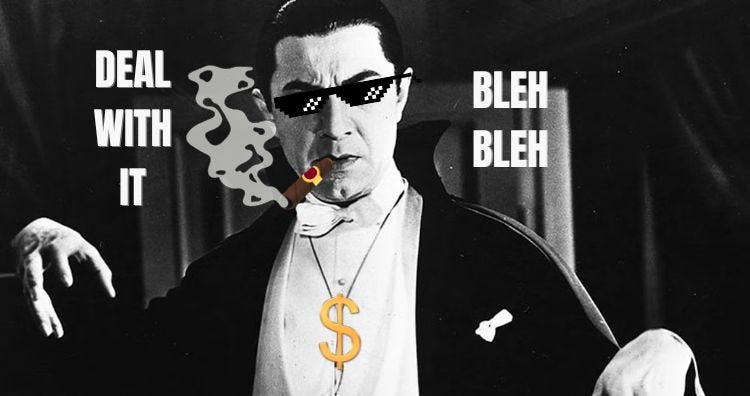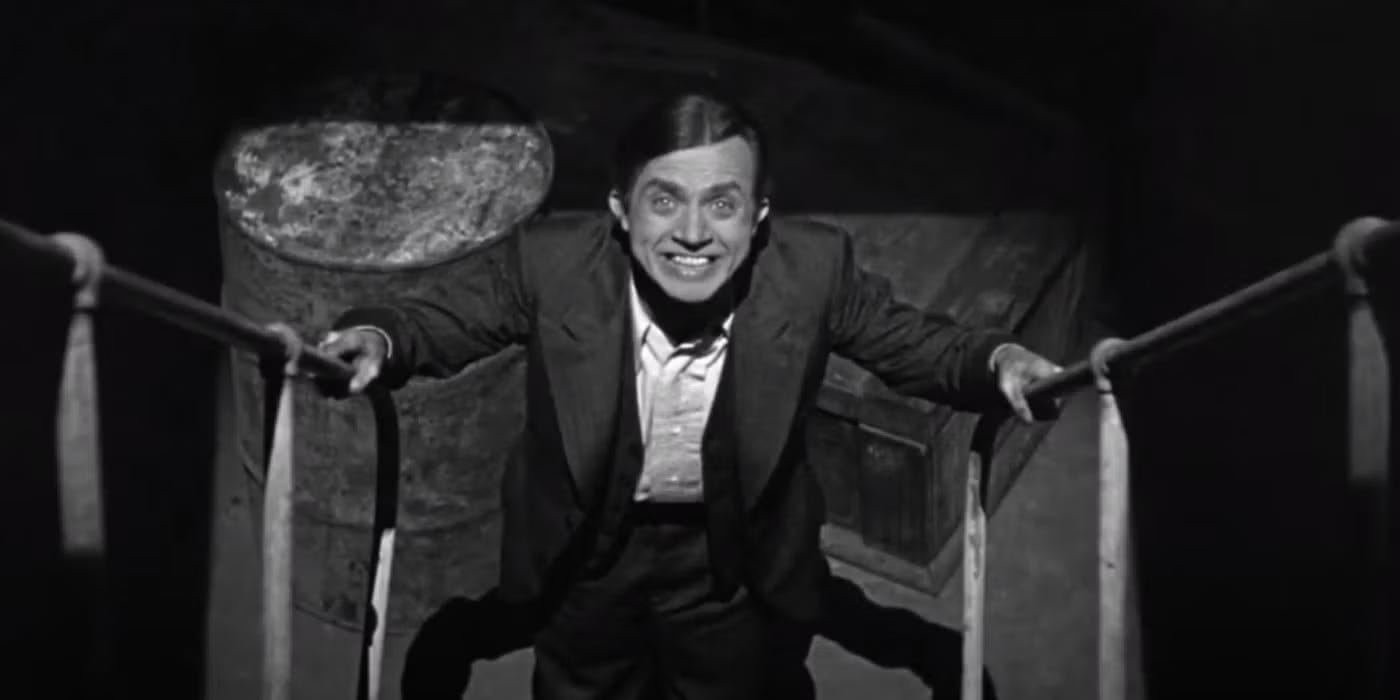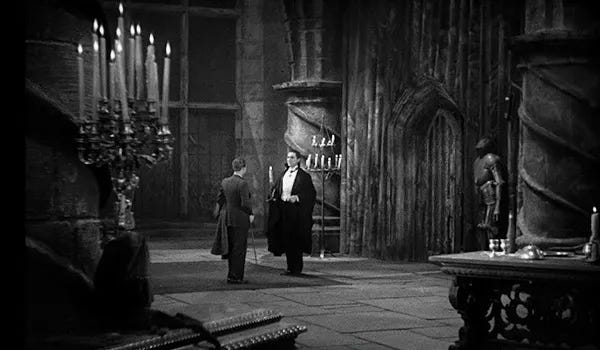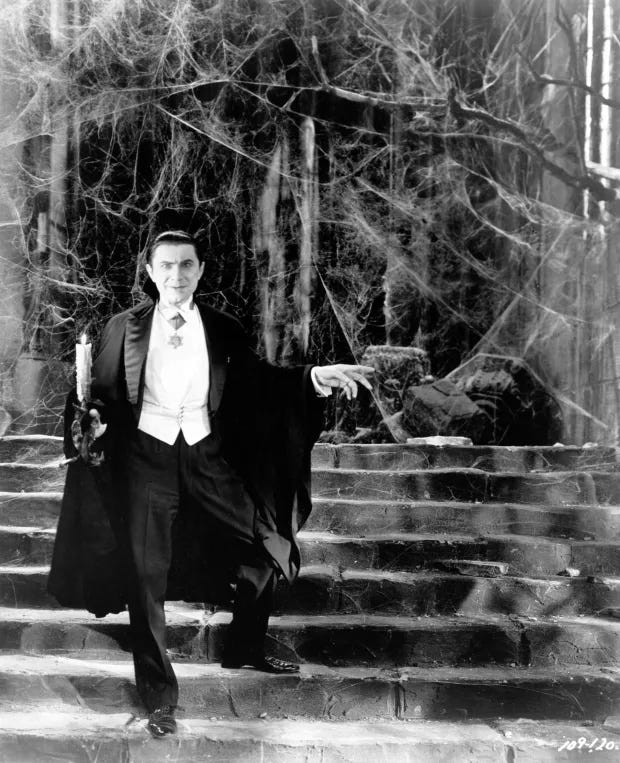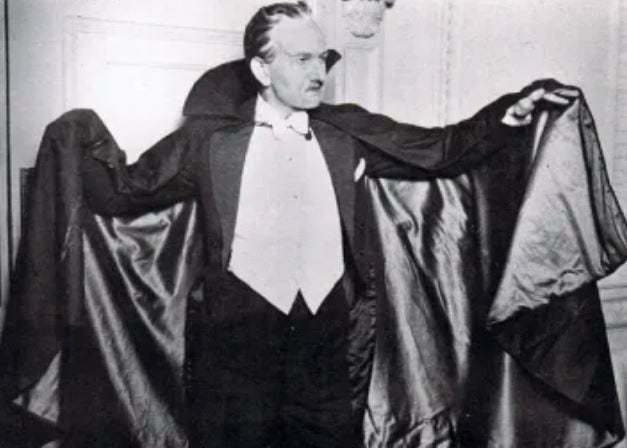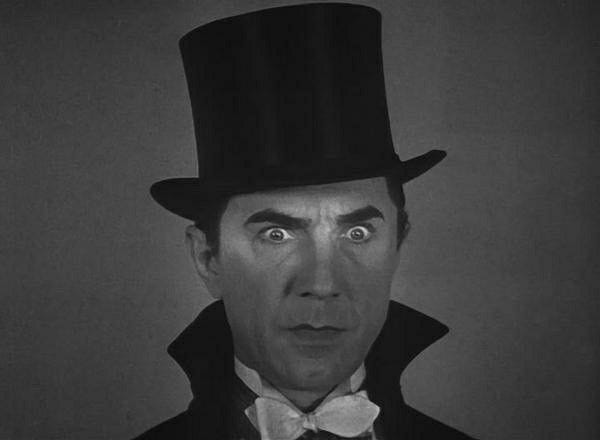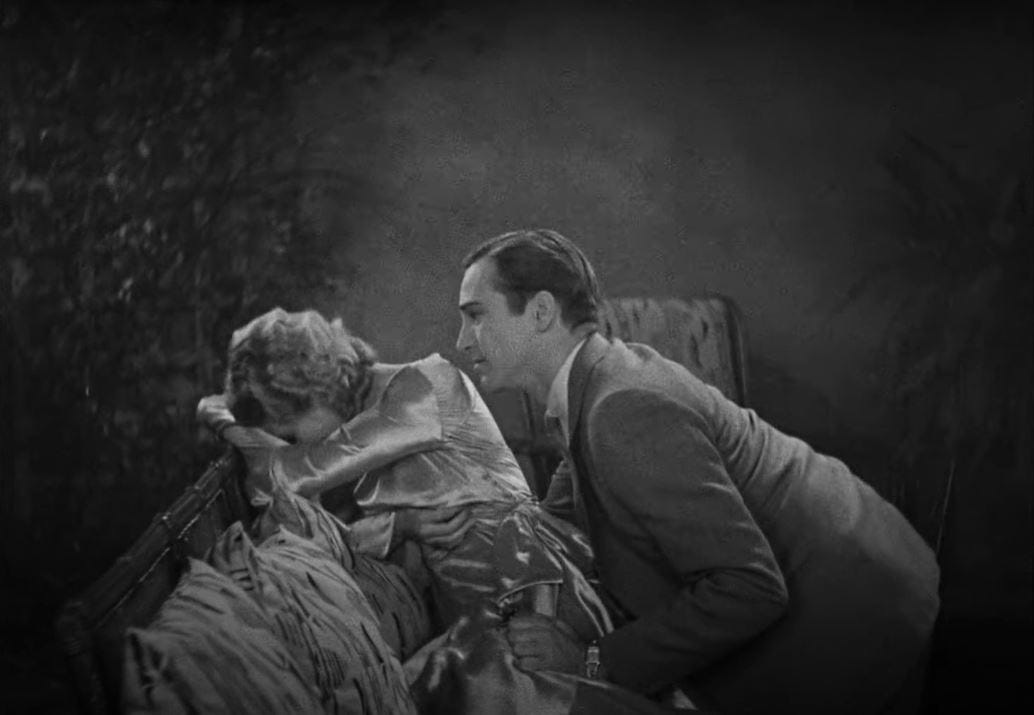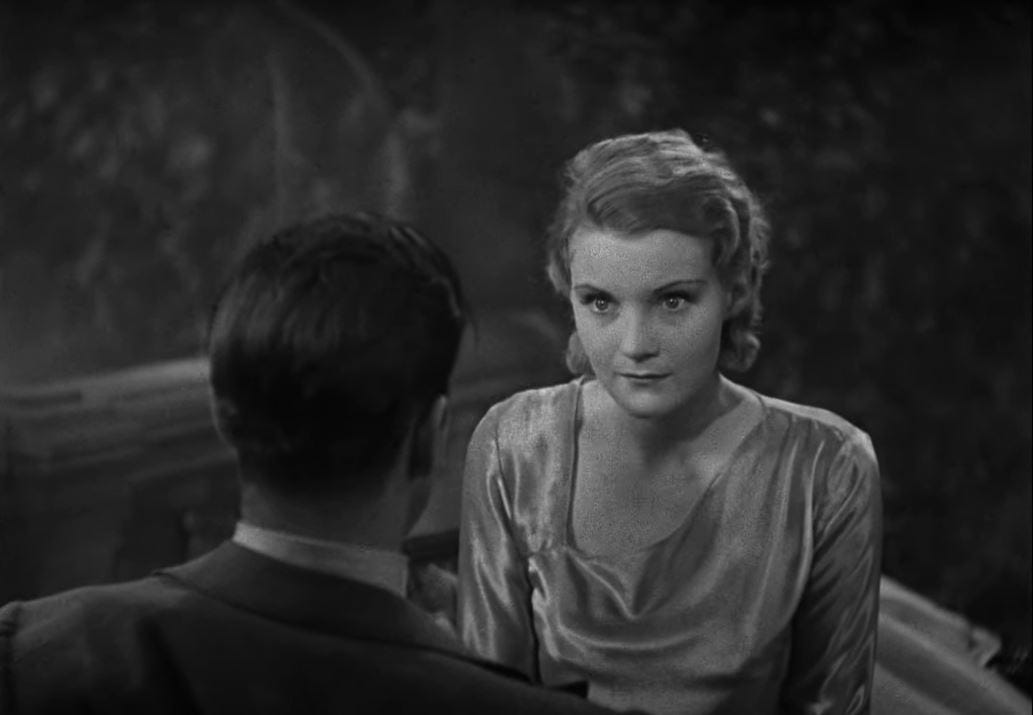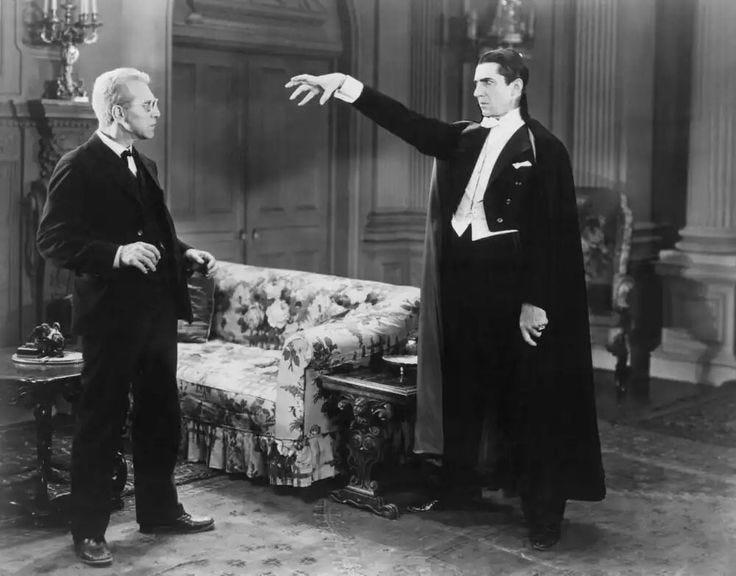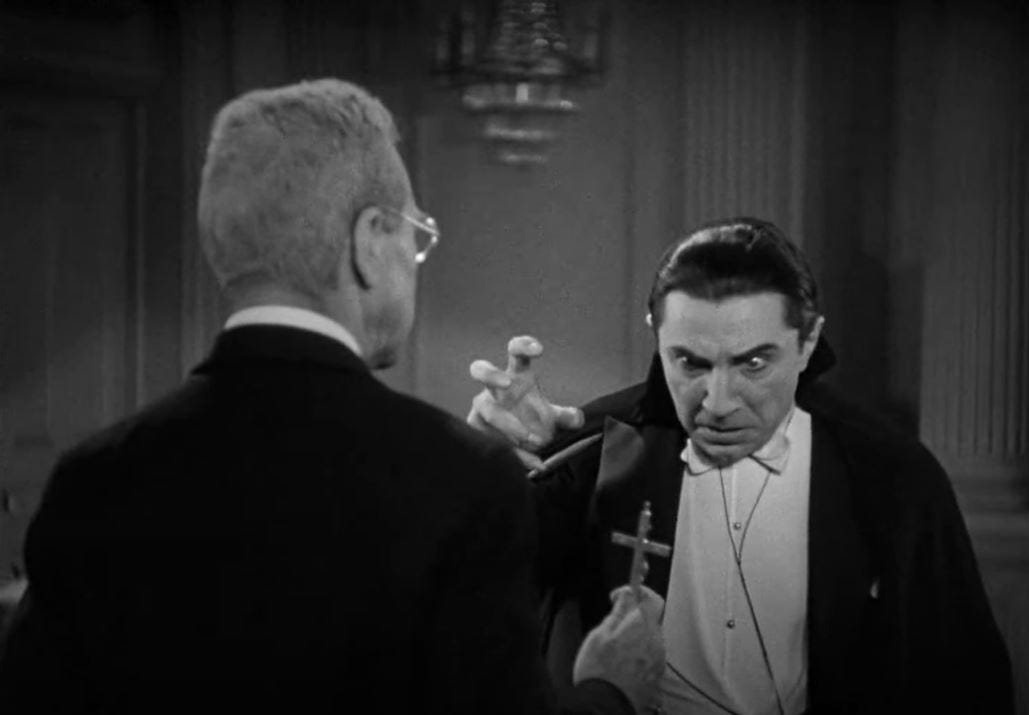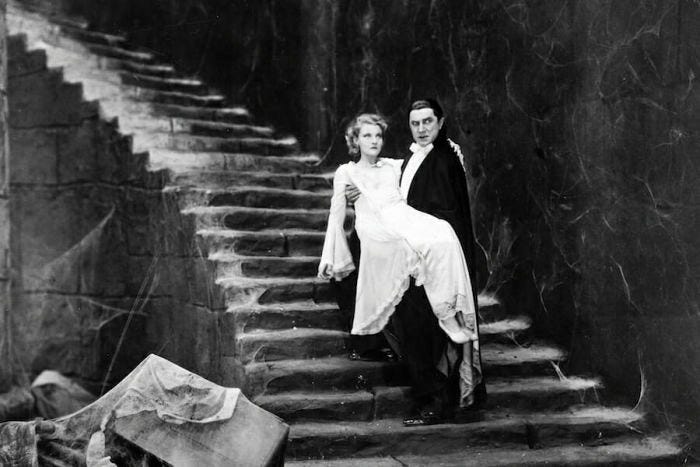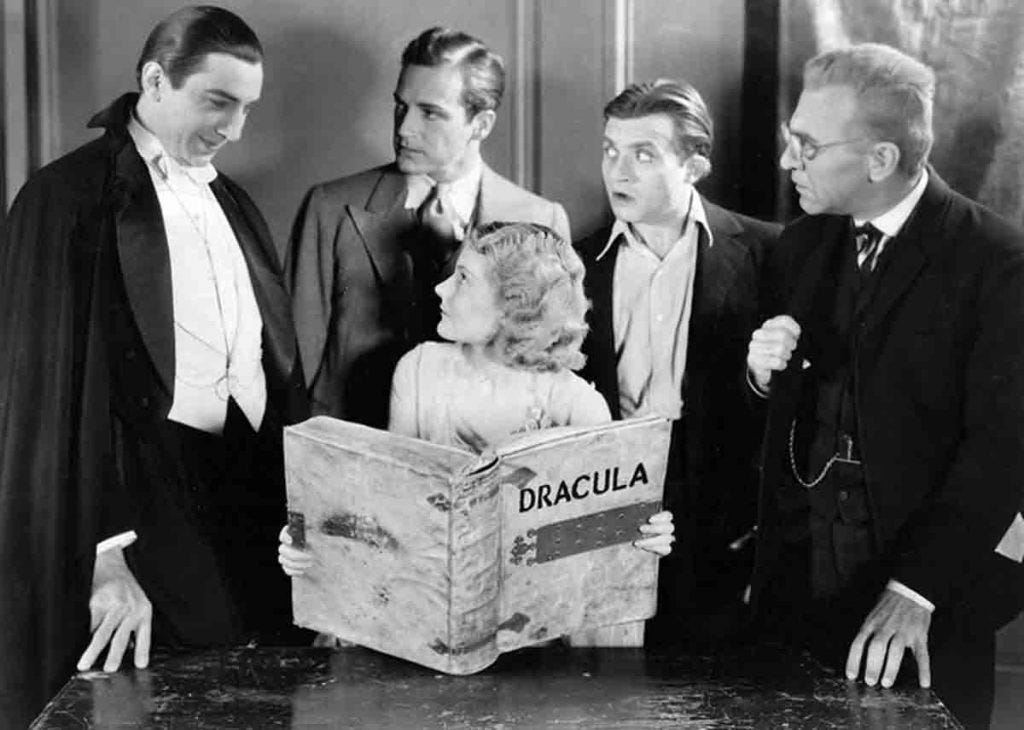Universal’s Dracula: Blame it on the Rich Guy
Our journey toward Halloween continues, as we take a look at the most famous adaptation of Dracula with Tod Browning's Universal classic from 1931. But does it hold up?
Bleh! If you’ll pardon my Transylvanian.
Yes, as we trudge along the uneven and winding road of Dracula adaptations, it is high time we talked about the valiant successor of Nosferatu. And I mean nothing less than valiant, considering Murnau’s first attempt at portraying the Vampire Count on the big screen resulted in his company Prana filing for bankruptcy, followed by years of legal battle against the Stoker Estate, and ending in the destruction of nigh all copies of the film.
But on the other side of the Big Pond, the land of opportunity still lived up to its name: just as Stoker had adapted his own novel into a stage play, a new Broadway production reared its head in 1927, far away from the estate’s reach. And so, without any fuss over changing names or places, Count Dracula took the stage by storm, thanks to the eerie and exotic portrayal of a rising actor who, having reached Ellis Island a mere six years earlier, had taken up the name Bela Lugosi.
As the play reached the end of a successful three-year run, Bela, having worked in film and theater, heard another opportunity ringing: in 1930, the American movie business was booming; people, yearning for a cathartic escape from the drudgery of a post-1929 job market, latched onto the fantastic, the grotesque and the macabre; and upcoming director Tod Browning, after Lon Chaney’s tragic death a year before, was one main actor short for his movie: Dracula.
A few telegrams later, Lugosi got the part. And what follows is history.
And by “history”, I mean “extremely pertinent commentary on class warfare, Marxism and the hypocrisy of the rich concerning sexual emancipation”.
But first, let’s set the stage (a rather good choice of words, as you will see in a minute).
When the movie feels more staged than the play
As a direct adaptation of the play, Tod Browning’s Dracula already takes a radically different turn in the way it tells its story compared to Murnau’s: in Nosferatu, letters, ancient manuscripts and newspaper clippings carried the larger part of the narration, in an effort to emulate Bram Stoker’s epistolary novel.
But Universal’s Dracula takes in after its immediate inspiration: and therefore, all exposition is carried through dialogue, as characters exposit the various defining traits of the Carpathian Mountains, or describe the powers of the dreaded Count and his bewitching brides.
This has the benefit of conveying information efficiently, as well as dismissing the usual (and sometimes heavy-handed) internal monologue. But its downsides are heavy:
For one, there is no suspense regarding the Count and his powers: as soon as Renfield (who replaces Harker’s role at this point in the story, as we’ll discuss later) expresses his will to go to Castle Dracula, a helpful local gives him the Count’s entire character sheet. None of the slow build-up we get in the book here! Plus, if you even dared attribute the peasant’s comments to mere superstition, the movie quickly cuts to Dracula stepping out of his coffin, just to make it clear.
Another issue is the lack of visual storytelling, replaced by characters explaining what happened off-screen: when the ship carrying Dracula reaches the English shore, and a vampirized Renfield shows himself to the arriving journalists (with his iconic laugh, which is still as chilling as ever), did we really need one to explicitly say: “he’s gone crazy”?
And this happens way too often: Dracula visiting Renfield in the asylum (“Ratssssss… RATSSSS…”), Mina being turned by having drunk some of the Count’s blood, or a vampirized Lucy terrorizing small children in the night… As crucial as they are to the plot, these scenes are only described after the fact.
Now this could be attributed to the source material: since a stage production cannot make use of lighting, matte paintings or camera angles with the same proficiency as a movie, you will have to rely heavily on description, especially on whatever is happening off-stage.
Another thing to remember is, although the Hay’s Code would not be enforced until 1934 at the earliest, movie studios already had severely restrictive guidelines (colloquially called “Don’ts” and “Be Carefuls”) in place as early as 1927. This is also why one would not see Dracula actually sucking his victim’s blood on the silver screen until Hammer Productions decided to go all the way in 1958.
Regardless, relying so heavily on post-hoc explanations and descriptions is quite egregious in a visual media, especially one which has created such iconic imagery, you would expect to see at least a little more.
A literally Gothic atmosphere
And on that level, Tod Browning does not disappoint: in spite of the substantial lack of special effects (mostly limited to fog machines and plastic bats on strings), we still get several gorgeous matte paintings, and a good few shots of Dracula’s Castle and his London lair in Carfax Abbey (which look suspiciously similar, very curious).
The Castle’s interiors are especially Gothic – quite literally so, as the pointed arches in some shots make the entire structure look like a cathedral. The heavy cobwebs, dusty floors, dilapidated stones, and antique furniture create a wonderfully spooky atmosphere, and seeing animals crawling through every crack makes it seem like, in spite of appearing long dead, this castle is very much alive…
You’ll notice the massive size of the castle, making Renfield look small, insignificant.
And in spite of the lack of effects, these first few scenes with Dracula have become indelibly connected with the popular image of the character.
And since we’re talking about Lugosi…
Count Dracula: how Bela Lugosi redefined a character
Apparently, a first screenplay by Louis Bromfield would have required two actors to play the part: one for the aged Count in his castle, and another younger vampire, having rejuvenated himself by feasting on the blood of young Londoners. Though it would have made for an interesting take, it would have been a shame to cut Lugosi’s part in half.
Because every time he’s on screen, the movie gets better. The strange accent, the falsely polite grin, the off-putting rhythm of his lines, his fixed, imperious stare… It all contributes to creating a truly iconic image of the legendary Count.
And so much of what we take for granted about vampires was first defined by this film. His very design, which we take for granted, forever changed the mental image of Dracula: the white shirt, the tuxedo, the dark bat-like cape, the black slicked-back hair… Although Lugosi was not the first to wear this costume (not even on stage, as actor Raymond Huntley wore the same in 1924), its striking appearance on the black-and-white silver screen made an incredible impression.
In the novel, the Count is only mentioned as being “clad in black from head to foot, without a single speck of color about him anywhere”. Something which you see in Nosferatu, and immediately associates the character with austerity, night, death, and the darker impulses of man. Something quite fitting for Count Orlok, who I believe to be symbolically linked with the primal, bestial side of man.
But our Dracula represents something quite different.
The Social Monster (what your English lit teacher nagged you about):
As the decades go by, we as a culture tend to remember movies more than the books they were based on, leading some to think Faramir’s arc in The Lord of the Rings consisted in confronting his daddy issues, others to assume Wolverine was always 6 foot 5, and others still to staunchly believe Dracula was always about class warfare.
The theory is thus: vampirism is a symbol of the upper classes profiting off of the lower classes; the bourgeoisie feeding upon the proletariat.
This commonly-accepted idea rests upon three elements:
1) Dracula is a count, and therefore representative of the upper class;
2) Dracula appears polite and well-mannered, much like the bourgeoisie wears a façade of law-abiding respectability as it gorges upon the lives of the working class;
3) Dracula mingles with the high society of London, even going so far as to openly visit his future victims.
But if we turn strictly to the novel, these elements are not always as clear-cut as in the movie:
1) Dracula being a count associates him with old European aristocracy, rather than the capitalistic bourgeoisie; his attitude throughout the novel as one “who commanded nations” hearkens back to darker times, where violence and bloodshed were more common than in “these days of dishonourable peace”. He certainly has a sense of crushing superiority toward all mortals around him, but this element encompasses far more than just the moder world’s upper-class attitude toward the destitute. The way he commands his wives, leaves Harker behind in his castle, or dismisses Renfield after his usefulness has passed, come across as the attitude of a lord toward his subjects or a wolf toward his prey.
This attitude is also visible in the film, but it is interesting to note Dracula’s first victim in England is a flower-girl; and the way he introduces himself to Mina, and eventually enters her room by the third act, is by hypnotizing a maid. So there is some evidence there of a commentary on the predatory attitude of the rich over the poor (or men over women).
2) Dracula’s polite façade is visible in both the novel and the film: he is a good host to Harker (or Renfield), offering food, wine, and a pleasant and sophisticated conversation. Harker expresses his admiration for his intelligence and his knowledge of England spanning multiple subjects. But, once again, this possible reading is far from the only one; and this idea of a monster hiding behind a mask seems more appropriately interpreted in psychological, or even spiritual terms.
But we will discuss this later.
3) And the most important point: in the novel, Dracula never mingles with high society. He uses working-class people to move his coffins around, but does not show up at the Harker household as an eccentric count from a faraway country. In fact, he seems to remain hidden from everyone, preferring to attack his prey at night (even though, as in the movie, he can move about during the day).
The Count’s strategy in the Universal movie is entirely different, as he arranges a meeting with Johnathan, Lucy and Mina (here the daughter of an older Doctor Seward) in a fancy theater. He clearly uses his allure as an exotic gentleman from a country remote enough to be romantic: he tells Mina stories of his home country (off-screen, once again), and easily charms Lucy, who in this adaptation is a poetry addict. This veneer of sophistication and good manners, even when faced with an enemy as clever and perspicacious as Van Helsing, helps him gain access to his victims.
Another thing to remember is that, in the novel, Johnathan and Mina are quite poor, whereas in the movie, they seem to have no issue with money. This may have been part of the movie’s point of Dracula infiltrating the higher classes, but it deserves to be mentioned, as it shows how little actual class conflict there is in this movie. In the end, it comes across as more of an urban bourgeois drama.
It should also be noted that the only other representative of the upper class, Arthur Holmwood, is never shown as pampered, commandeering, manipulative or arrogant. He occupies his station in life as best he can, instead of displaying negative bourgeois traits which, one would assume, would make him the object of reprimands from the other characters, if the novel really was fundamentally about the struggle between social classes.
But since, to my chagrin, neither Arthur Holmwood nor Quincey Morris show up in this adaptation, we must move back to the movie itself.
And I believe it is safe to say this was the first film ever to use the common trope of the “social vampire”. Taking perhaps some inspiration from the first vampire novel (John William Polidouri’s “The Vampyre”, 1819), Tod Browning shows Dracula not as an ancient evil clawing its way back into the heart of modernity to plunge it again in primeval darkness and fear, but as an enemy hiding in plain sight, using his exotic flair, good manners and charming accent to work his way into a woman’s bed.
As a reminder, all characters and events depicted in this film are entirely fictitious.
Meet the Harkers: close, but no cigar
And speaking of characters, I would like to return to our favorite couple: Johnathan and Mina Harker.
Welcome to yet another episode of Everybody Hates Johnny!
Remember how in Nosferatu, Harker was only useful until he came back from the Vampire’s castle? Well, here, that’s precisely the opposite problem.
Since his part in Transylvania is given to Renfield, Harker just stays in London, and his confrontation with Dracula is limited to petty jealousy, making him even more useless than usual.
In fact, re-watching the film, it’s crazy to see how much Van Helsing carries it all: identifying the vampire, exploiting his weaknesses, finding out his lair and destroying him (once again, off-screen, I see somewhat of a pattern here), … He is the only character who truly advances the plot, while Johnathan Harker just bumbles around in his footsteps.
But let’s keep it for the end…
And let us turn our attention to poor Mina: because, just as in Nosferatu, in spite of some disappointing alterations, she shines brighter than every other good character, save one.
Would.
First, her last scene with Lucy is a delight to watch, as the two are shown to be precisely what Stoker intended: solid friends, with a great amount of complicity. Their playful dialogue and Helen Chandler’s solid performance (in spite of the limited range the role allowed her, which she reportedly resented) sells Mina as a kind, witty young woman.
And another interesting element is how her character is somewhat mixed in with that of the original Lucy Westenra: at the beginning, she falls victim to Dracula, but much like the original Lucy, her will is short-circuited by her new, vampiric self. Her scene with Johnathan where she tries to “kiss” him reminds me of Lucy’s attempt at luring in her husband Arthur for a bite, right before she dies to mortal life and is reborn a vampire.
Instead of Ellen’s virtuous sacrifice, this Mina is closer to the original, if only because of her struggle against Dracula’s will, and the final confrontation being about saving her soul. But she has little of the wits, nerve and exalted courage of her literary counterpart. This of course may be attributed to a lack of runtime, since Book Mina shows her “man’s brains” in her ability to reconstruct and synthesize the complete story of her friends’ testimonies about the Count – something the novel needs to answer for its epistolary nature, but would be dead weight in a movie.
In both novel and movie, Dracula disguises his violent blood-lust behind a socially-acceptable veneer (though he does it a lot more in the movie); but so do his victims. In the novel, Lucy tries to rejoin Dracula in her sleep, hides the mark of his teeth on her neck, begs her maid to take away the garlic from her room. Similarly, the movie shows Mina disguising her impulses as a brand-new vampire, before momentarily shaking off Dracula’s yoke to express her love for her fiancé.
One could fear that, limiting itself to this idea of the social vampire, the movie would dismiss the spiritual side of the battle against Dracula.
But contrary to Nosferatu, this Dracula embraces tradition.
Van Helsing, and the birth of Dracula canon
It seems crazy to think about, but this was the first movie to establish a substantial canon for Dracula’s powers and weaknesses:
Count Orlok already could hypnotize his prey, turn himself into an animal, or become intangible (much like Lugosi’s Dracula, who turns into a bat or a wolf, and passes through his castle’s cobwebs without hindrance). But Lugosi goes above and beyond, finally showing us a Dracula who fears wolf’s-bane and crucifixes.
We learn that the vampire can walk about during the night, but must rest every day in a coffin containing earth from his home country; we see him turn some of his victims into vampires, and we even see Lucy turned into the Bloofer-Lady, roaming the countryside to drink the blood of children (something which, again, will occur off-screen).
And of course, this is all due to the actual hero of this tale: Abraham Van Helsing, who is, as Dracula points out, “a foreigner”.
And for a first appearance on the silver screen, this remains a very solid portrayal, perhaps the very best and most loyal to the source material as of yet.
Tod Browning also does a wonderful job showing Van Helsing as a mirror image of Dracula: he too is a foreigner, and possesses strange knowledge of the supernatural. But in contrast with the Count, he uses it to protect others against the powers of darkness.
Their dynamic gives us the best character-driven scene in the movie, where the two men, through an apparently polite dialogue in an elegant setting, might as well be fighting with drawn blades. Each word cuts hard, thanks to two solid performances…
The only problem with Van Helsing is the one constant issue that plagues this film: as pointed out throughout this little diatribe, most of the plot happens off-screen. Even Dracula’s death, a moment which other iterations would showcase as a triumphant moment (especially Hammer, with its insane series of Dracula deaths), but here just… happens. And that’s that, everything is okay now.
It is especially disappointing, since there is little connective tissue between scenes as is: it makes the flow quite jarring at times, especially when Lucy, turned vampire, appears briefly only to vanish for the rest of the movie. We can only hope Dracula’s demise was also her deliverance, as it was Mina’s.
And to say a few more words on Dracula…
Conclusion – Dracula: Become Human
Did you know that both Tod Browning and Bela Lugosi fled home in their youth to pursue a career in the arts? Bela fled his family in Russia to become an actor, and Tod joined a circus in his youth.
It has little bearing on the plot of the movie, but I can’t help but notice a certain connection between the director and Lugosi’s character.
Even though he wasn’t the first choice for the role by far, Lugosi shines before the camera, to the point that the camera itself seems to fall for his charm at times.
His mischievous grin and odd intonations hold our gaze as surely as Dracula’s hypnotic eyes hold his victims under his spell. And this fascination, far from the morbid interest in the monstrous which we see in Nosferatu, seems here more playful.
Perhaps because this Dracula expresses a wider variety of emotions, far beyond what Max Schreck’s role as Count Orlok allowed: his turn from burning anger to cynical contentment when he realizes Van Helsing has identified him gives us a window into his twisted mind.
Perhaps it is also because of his relationships: he clearly shows a special interest in Mina, and discards other servants like Lucy or Renfield. There is more there than brutal blood lust: this monster of the night has a heart, and in his own way, yearns for his own twisted version of love.
Perhaps it is because Tod Browning, who would soon reach the pinnacle of his career with Freaks (1932), did what he would become known for: showing a vile monster in an attractive human disguise, and showing the humanity of the deformed, the marginal, the “freaks”.
Dracula, here, is both. He is a monster, showing a façade of respectability; but he is also still a man. A man of flesh, though it be dead-cold, with passions and weaknesses.
This goes far beyond a criticism of the rich, or of the upper class: this is, as I see it, showing that abject cruelty, bestial lust and the desire to dominate are not so monstrous as they are desperately human traits.
And remember what Van Helsing said, in the original post-credit scene (now tragically lost to time), at the end of the film:
"When you get home tonight and the lights have been turned out and you are afraid to look behind the curtains—and you dread to see a face appear at the window—why, just pull yourself together and remember that after all, there are such things as vampires!"
Well. Aren’t there?


